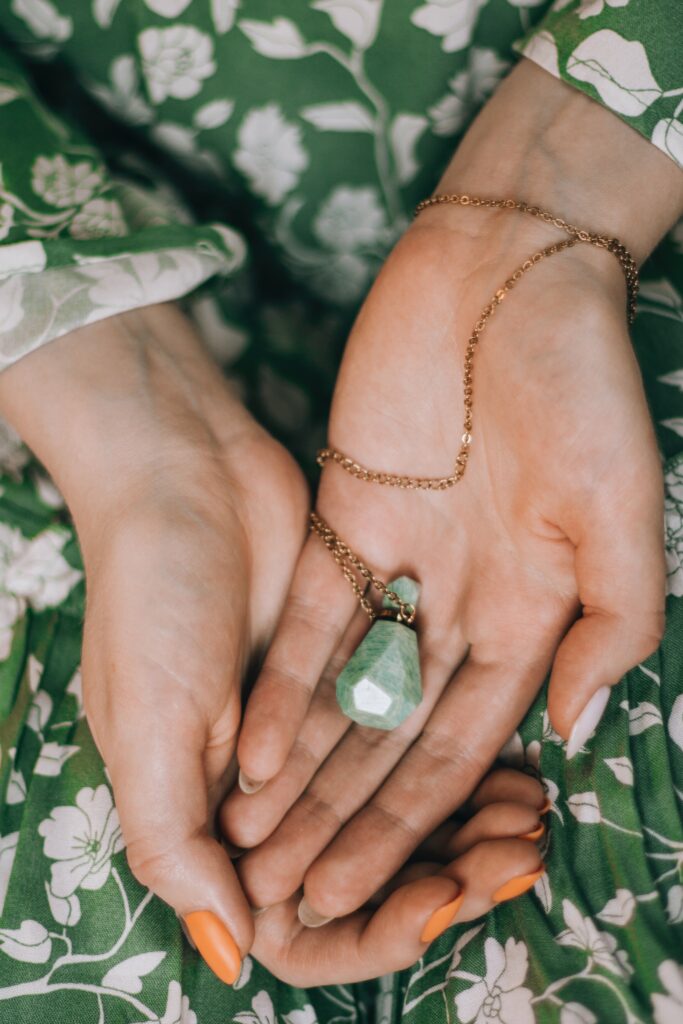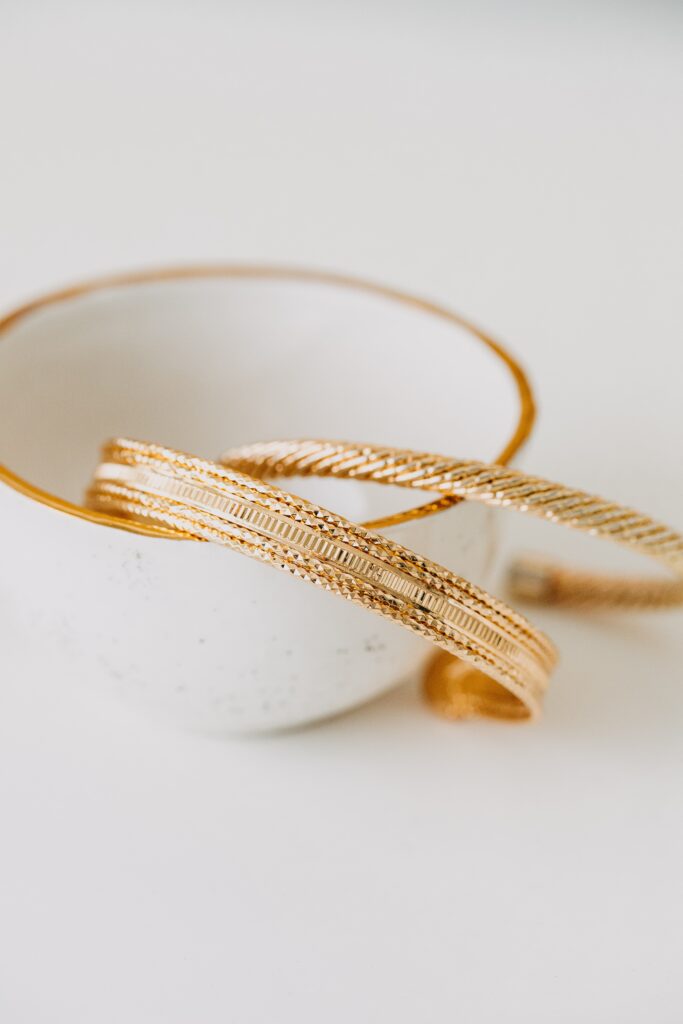Other
Permanent Jewelry: Timeless Expressions of Individuality and Beauty
In recent years, permanent jewelry has become an increasingly popular in females because its make unique identity. Unlike traditional artificial jewelry that can be taken off at the end of the day, permanent jewelry leaves a lasting mark on the body, becoming an inseparable part of a person’s story. This article explores the fascinating world of permanent jewelry, delving into its various forms, designs, processes, pros, and cons.
Table of Contents

What is Permanent Jewelry?
At its core, permanent jewelry includes two main categories: tattoos and piercings. Both forms of body art have been practiced for centuries, holding cultural, spiritual, and aesthetic significance across different civilizations. Today, modern society embraces these works of art, recognizing them as powerful tools of self-expression.
Read Also: Order Online Custom Jewelry
Types of Permanent Jewelry
Tattoos
Tattoos are perhaps the most recognizable form of permanent jewelry. They involve injecting ink into the skin to create intricate and artistic designs. From minimalist symbols to elaborate full-body masterpieces, tattoos cater to a diverse range of preferences. Tattoo artists are skilled professionals who bring their clients’ visions to life with precision and creativity.
Piercings
Piercings, on the other hand, focus on adorning specific body parts with jewelry. Common piercing areas include the ears, nose, eyebrows, lips, tongue, and various other body parts. With advancements in piercing techniques, people can now explore a wide array of jewelry options, from studs and hoops to barbells and rings.

Popular Permanent Jewelry Designs
Tattoo Artistry and Styles
Tattoo artistry has evolved significantly over the years, giving rise to various styles. Among the popular ones are:
- Traditional Tattoos: Featuring bold black lines and a limited color palette, these tattoos draw inspiration from classic designs.
- Realism: Capturing intricate details and lifelike portraits, realism tattoos bring images to life on the skin.
- Watercolor: Mimicking the free-flowing nature of watercolors, this style emphasizes vibrant colors and abstract shapes.
- Minimalist: Embracing simplicity, minimalist tattoos focus on clean lines and subtle designs.
- Geometric: Utilizing geometric patterns and shapes, this style creates mesmerizing optical illusions.
Trendy Piercing Options
Piercings have witnessed a surge in popularity, with several trendy options available:
- Helix Piercing: Located on the upper ear cartilage, helix piercings offer a chic and edgy look.
- Septum Piercing: Placed in the middle of the nose, septum piercings have become a symbol of boldness.
- Tragus Piercing: On the small flap just outside the ear canal, tragus piercings add a touch of elegance.
- Daith Piercing: Placed in the innermost cartilage fold of the ear, daith piercings are both stylish and subtle.
The Process of Getting Permanent Jewelry
Tattooing Process and Aftercare
Getting a tattoo involves several stages:
- Design Consultation: Clients discuss their ideas with the tattoo artist, who then creates a custom design based on their preferences.
- Inking: The chosen design is transferred onto the skin, and the artist uses a tattoo machine to inject ink into the dermis.
- Healing: Aftercare is crucial for proper healing. Clients must follow the artist’s instructions, keeping the tattoo clean and moisturized.
Piercing Procedure and Healing
Piercings follow a similar process:
- Piercing Placement: The chosen body part is marked, and a sterilized needle or piercing gun is used to create the hole.
- Jewelry Insertion: The chosen jewelry piece is inserted into the fresh piercing.
- Healing: Proper aftercare is essential to prevent infections and promote healing.
Pros and Cons of Permanent Jewelry
Advantages of Permanent Jewelry
- Self-Expression: Permanent jewelry serves as a unique canvas for personal stories, beliefs, and passions.
- Long-Term Investment: Unlike traditional accessories, permanent jewelry remains with the individual indefinitely.
- Symbolism: Tattoos and piercings can carry profound meanings and act as constant reminders of significant life events.
Disadvantages of Permanent Jewelry
- Permanence: Some individuals may regret their choices over time, as tastes and preferences change.
- Pain and Healing: Both tattooing and piercing can involve discomfort during the process and require proper healing.
- Career Limitations: In certain professions, visible permanent jewelry may not be acceptable.
Maintaining Permanent Jewelry
Proper maintenance is essential for the longevity of permanent jewelry:
- Tattoos: Regular moisturizing and avoiding excessive sun exposure help preserve tattoo vibrancy.
- Piercings: Maintaining good hygiene and using suitable cleaning solutions prevent infections.
Are There Temporary Alternatives?
While permanent jewelry offers lasting appeal, temporary alternatives exist for those seeking a trial run:
Temporary Tattoos
Temporary tattoos provide a risk-free way to experiment with designs before committing to permanent ink. They come in various styles, including water transfer, henna, and stick-on tattoos.
Clip-on Piercings
Clip-on piercings offer the appearance of traditional piercings without the need for needlework. They can be easily attached and removed, making them ideal for special occasions.
The Symbolism Behind Permanent Jewelry
Permanent jewelry often carries significant symbolism:
- Cultural Significance: In different cultures, tattoos and piercings hold spiritual and ritualistic importance.
- Personal Journey: Tattoos and piercings may symbolize personal growth, transformation, and milestones.
Personal Stories: Permanent Jewelry and Its Meanings
Behind every permanent jewelry lies a unique story. People often get tattoos or piercings to commemorate loved ones, express passions, or overcome personal challenges.
Celebrities and Permanent Jewelry
Celebrities have played a pivotal role in popularizing permanent jewelry. Many A-listers proudly display their tattoos and piercings, inspiring fans to embrace these forms of self-expression.
Cultural Significance
Permanent jewelry holds cultural significance worldwide:
- Ancient Practices: Tattoos and piercings were prevalent in ancient civilizations like Egypt, Greece, and India.
- Indigenous Traditions: Indigenous communities worldwide use tattoos and piercings for cultural identification.
Trends
As times change, so do the trends in permanent jewelry:
- Semi-Permanent Tattoos: Innovative ink formulations offer tattoos that gradually fade over time.
- Mix-and-Match Piercings: Combining different types of piercings for a unique look is gaining popularity.
- For more details visit our Facebook page
Conclusion
Permanent jewelry represents a timeless and meaningful way for individuals to express themselves. Whether through tattoos or piercings, people can adorn their bodies with art that carries personal significance and celebrates their journey. As with any form of self-expression, it is essential to carefully consider and appreciate the permanence of these adornments.
FAQs
- Can I remove a permanent tattoo or piercing? While there are tattoo removal techniques available, complete removal may not be guaranteed, and it can be a costly and lengthy process. Piercings can be removed, but the hole may close over time.
- Do tattoos hurt? The level of pain varies depending on the individual’s pain tolerance and the location of the tattoo. Some areas may be more sensitive than others.
- Are there any age restrictions for getting permanent jewelry? In many countries, the legal age for getting a tattoo or piercing without parental consent is 18. However, regulations may vary.
- Can I change the jewelry in a fresh piercing? It is essential to let a fresh piercing heal before changing jewelry to avoid complications.
- Do temporary tattoos look realistic? Temporary tattoos have come a long way in terms of realism, with many looking quite convincing. However, they can be easily removed when desired.


